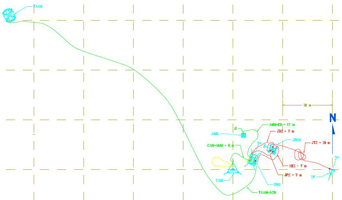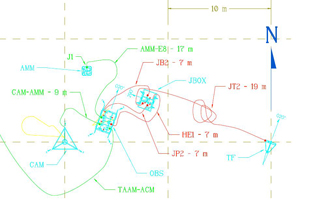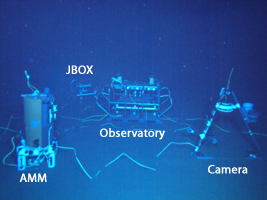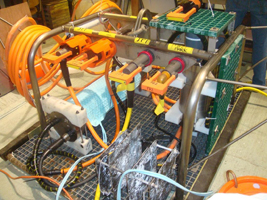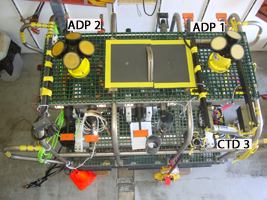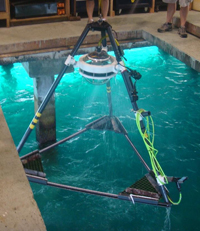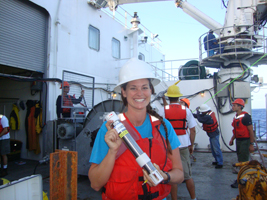Modules and Instruments Configuration
The ACO is a prototypical example of a deep ocean observatory system that uses a retired cable.
The ACO architecture uses highly reliable existing transoceanic cable systems to provide power
and communications bandwidth.
The ACO consists of various modules as shown in Figures 1, 2 and 3. A "junction box" (JBOX) is
connected to the telecom cable termination. The JBOX converts the telecom communications protocols to
standard 100 Mb/s Ethernet, and has as well a hydrophone experiment module (HEM) with two
hydrophones and a pressure sensor. Then the "observatory" (OBS) is connected to the JBOX.
The OBS converts the dc current on the cable to 48 V and 400 V, and distributes this, the
Ethernet, and timing signals to eight user ports. On the observatory are two acoustic Doppler
profilers (ADPs), a temperature/conductivity instrument (MicroCat), and a light.
Two additional modules are connected to the Observatory. The AMM (ALOHA-MARS Module) seafloor
secondary node
and the camera. The AMM provides four additional user ports and has two CTDO2s and a
fluorometer/turbidimeter (FLNTU). The camera
with two lights and a hydrophone is connected to the AMM node.
In addition, a 200 m tall
thermistor array/acoustic modem (TAAM) mooring system is installed. This
mooring system has 10 thermistors spaced vertically; these are
battery operated and recording data internally. This system is not connected to the Observatory.
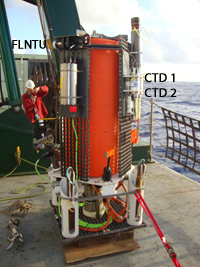
AMM: The ALOHA-MARS Module (AMM) seafloor secondary node has two Sea-Bird pumped MicroCats (SBE-52MP) measuring Temperature, Conductivity, Pressure and Dissolved Oxygen (CTD1 and CTD2); and a WETLabs Fluorometer/Turbidimeter ECO-FLNTURTD-2027 (FLNTU). This module also provides four additional user ports.
